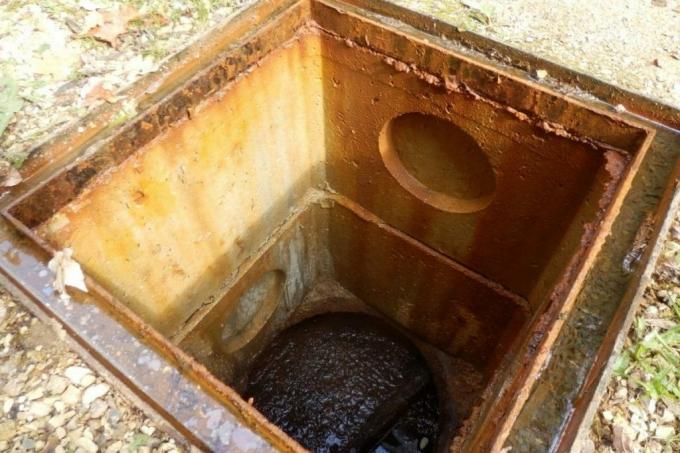
table of contents
- Clarifier for service water
- Completely empty the septic tank
- Clean the basin
- Remodel the basin
- Winter preparations
- frequently asked Questions
Old septic tanks often go unused, but they would be an ideal way to turn them into a cistern. Before a septic tank can be used to store water, you need to make some preparations.
In a nutshell
- Pump out the clarifier completely
- Clean the basin several times
- Use the basin only for service water
- Empty the basin completely in winter
Clarifier for service water
Older houses are usually equipped with their own clarifier. At the latest with the connection to the sewer network, which is being expanded across the board, many people ask themselves whether the decommissioned clarifier can still be used sensibly. Especially in recent years, with increasingly hot and dry summer months, old septic tanks can be reactivated and used as water reservoirs.
To the pelvis as Rainwater storage tank to use, some requirements should be met:

- Location near rain gutters
- near the garden
- Top access
In order to be able to convert the clarifier later, it must be possible that the water can be withdrawn again. For this purpose, the pool should be accessible from above. A pump is usually required during implementation so that the water can later be used for the garden or as service water in other areas.
Note: During the renovation, an opening could be made on the top later, but the effort with old pools is usually very high.
Completely empty the septic tank
Before starting the renovation, it is particularly important that the clarifier is completely emptied. If there are fecal residues in the basin, all of the water can be contaminated within a short time and all of the collected water must be emptied again.
Many underestimate how much remains are still in a disused tank. In addition, there is the fact that disused pools are not always completely airtight. As a result, water may have already entered, which mixes with the remains in the pool.
Tip: Sometimes farmers do the pumping out at low cost and take the leftovers to the nearest sewage treatment plant.

Clean the basin
Before you can use the pool as a water reservoir, a complete thorough cleaning is essential. It is ideal if you do this with a high-pressure cleaner. It is usually necessary to clean the pool several times and to dispose of the water again and again.
Suitable clothing is essential for this, especially if you want to take on this task yourself. However, there are also professional cleaning companies who take on this task. If you do this yourself, you should have the following equipment:
- waterproof suit
- safety goggles
- high rubber boots
- long gloves
Remodel the basin
The advantage of converting a septic tank to a water storage tank is that the effort is relatively low. Before filling it with water, you can check whether the basin is leakproof and, if necessary, seal it with waterproof sealant afterwards.
The most important point in the implementation, however, is a suitable pump system so that you can also pump the water back up. As a rule, a simple water pump, which is available in stores for a few hundred euros, is sufficient for this. The pump also has the advantage that you get enough pressure in the garden to comfortably water other distant areas with the hose.

Winter preparations
To ensure that you have something from your water reservoir for as long as possible, it is important to maintain the pool regularly. The effort is relatively low, because you only have to empty it in winter. This means that the risk of frost damage is low.
To empty it, proceed as follows:
- Pump out the pool in late autumn
- approx. Leave 10 cm of water in the basin
- Check the basin for damage after emptying it
- Also empty the water pump
To ensure that no more water comes into the pool during the winter, you should also shut off all inlets to the pool.
frequently asked Questions
No, if a septic tank is used as a cistern, there is no legal obligation to check it for leaks.
In principle, there is no limit to how long process water can stand in the catch basin. However, it is advisable to empty the tank regularly so that the germ load does not become too high.
The costs depend on the respective disposal company. There may be costs for delivery and disposal.

